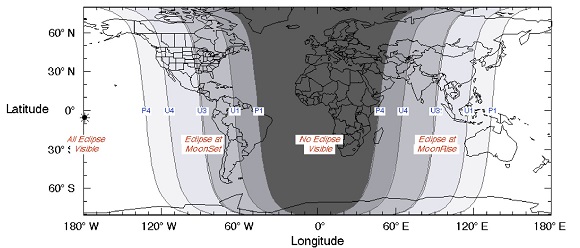A total lunar eclipse takes place on April 4, 2015 and is visible from western North America, the Pacific, East Asia, Australia and New Zealand. A lunar eclipse occurs when the Moon passes within Earth's shadow (umbra) resulting in a darkening or reddening of its appearance. The Moon doesn't usually disappear completely due to scattering of sunlight by the Earth's atmosphere.
Eclipses of the Sun and Moon occur in pairs. When a solar eclipse occurs, a lunar eclipse takes place either before or after with this lunar eclipse following last month's solar eclipse. The partial phase begins at 10:15:45 UT with totality reached at 11:57:54. The duration of totality is short on this occasion; it lasts just 4 minutes and 43 seconds. Once totality ends the partial stage again resumes, ending at 13:44:46 UT.
Unlike a total eclipse, which can only be seen from a very narrow band across the Earth, a total lunar eclipse can be seen from any place where the Moon is above the horizon. The charts below show the visibility of the upcoming lunar eclipse.


